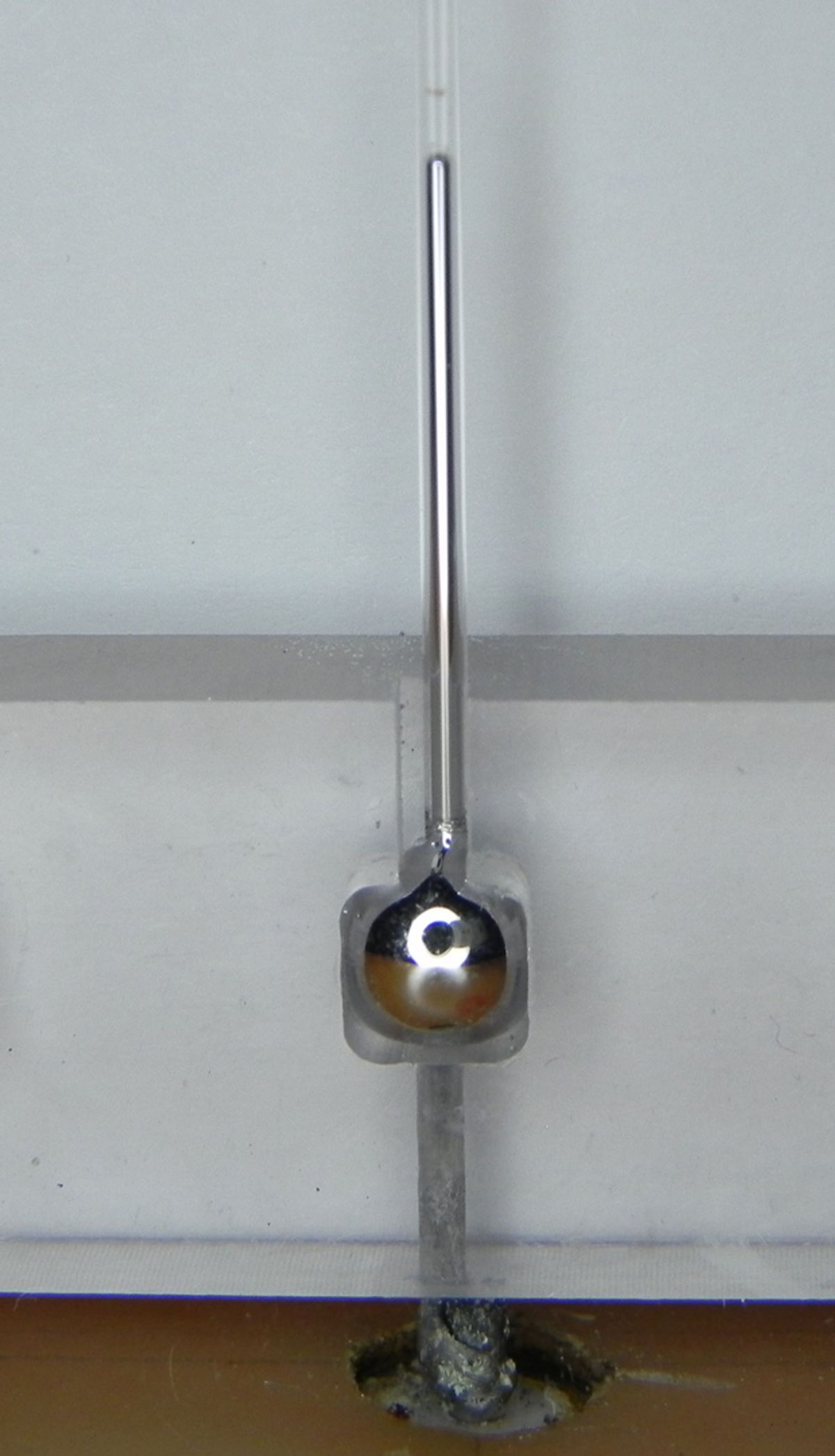Tuning in is getting to be a complicated thing. The Internet of Things will need more microwave bands with shorter wavelengths. Cell phones are already need to link to GPS and Wi-Fi services on top of 4G and other cellular networks. And in the future they’ll likely also have to contend millimeter-wave bands for 5G services. All those need antennas of different lengths and shapes to accommodate the sometimes widely spread wavelength bands.
Monopole antennas, consisting of a single conducting rod, transmit maximum power when their length corresponds to half the wavelength of the RF signal, but for devices operating at different wavelengths this becomes a problem. "The present solution is to have a switchable filter bank along with switchable and/or multi-band antenna,” says Jacob Adams, an engineer at North Carolina State University. “These solutions take up a lot of space and a single widely tunable element has the potential to replace several of these fixed components." He and colleagues describe in today's issue of the Journal of Applied Physics just such an element: a liquid metal antenna that can continuously adapt to different wavelengths by changing its length inside a capillary.
Such antennas have been developed in the past but with little success because they rely on pneumatic pumps for controlling the length in the capillary, making integration into electronics difficult.
Instead of external pumps, the NC State researchers used a voltage to control the amount of liquid metal allowed to flow into a capillary. Michael Dickey, a chemical engineer at NC State, discovered that a voltage across the interface of a liquid metal, such as an alloy of gallium and indium, combined with an electrolyte could cause the liquid metal to spread or to contract, depending on whether the voltage is positive or negative. A positive voltage causes the formation of an oxide layer on the metal, lowering the surface tension and allowing it to flow easily, while a negative voltage removes this oxide layer, causing the metal to contract, resisting flow.

The researchers used the electrochemical control of the fluidity of the liquid metal to coax it into and out of a capillary. Their setup resembled a fever thermometer, where the length of the mercury column in a capillary is controlled by the thermal expansion of the mercury in a reservoir connected to the capillary. But instead of temperature, the engineers used voltage. Tuning the voltage allowed them to control the length of the metal column in the capillary.
For centimeter-wavelengths, liquid metal antennas would remain separate elements in the circuitry, but for millimeter waves they could be integrated on microfluidic chips, says Adams. However even larger liquid metal antennas could be useful in defense communications and radar systems that use bands ranging from a few megahertz to tens of gigahertz, says Adams.
"While a single tunable element will probably never be able to cover this entire range, they could potentially cut down on the 'antenna farms' found on large defense platforms, such as on ships and planes," says Adams.



